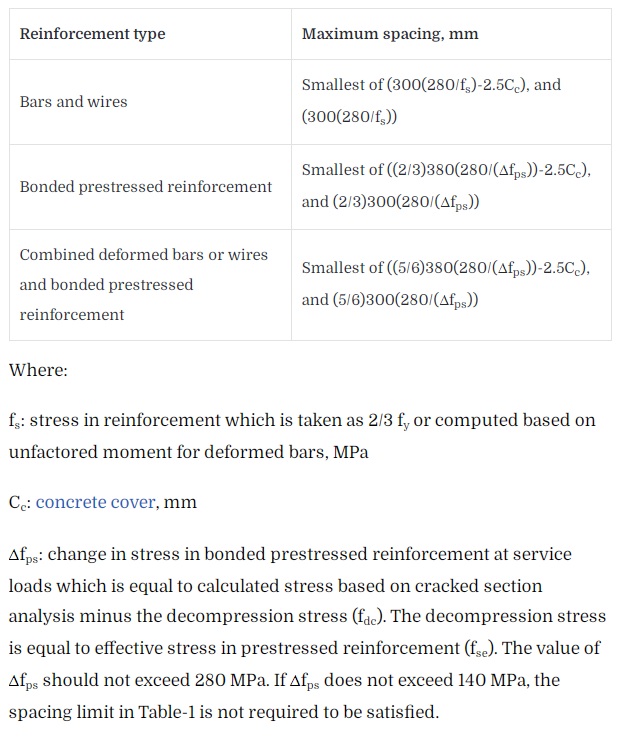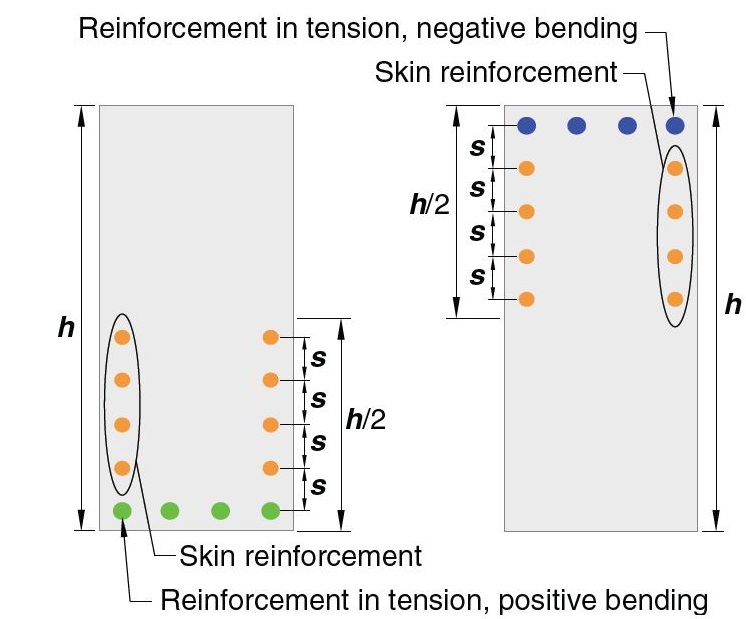Longitudinal skin reinforcement is deformed rebar, wire, or bonded prestressed reinforcing bars evenly placed on either side of the vertical surface of the tensile region in a relatively deep beam to control the width of the crack. If the deep beam is not provided with such reinforcement, the crack width in the web will be greater than the cracks developed at the level of longitudinal tensile reinforcement.
For non-prestressed Class C beams greater than 900 mm in height, longitudinal skin reinforcement must be made at a distance of 1/2 the depth from the tensile side of the beam in accordance with ACI 318-19.
However, the British Standard for the Design and Construction of Reinforced Concrete and Prestressed Structures (BS8110) requires an element depth of 750 mm.
Table of Contents
Why Skin Reinforcement is Provided in the Beam?
There are two main purposes to provide skin reinforcement in the beam.
- Reduces crack width in the web of a beam.
- Enhance the ultimate load-carrying capacity of the beam.
Longitudinal Skin Reinforcement Detailing
Reinforcement Bar Size:
- The diameter of skin reinforcement varies from No. 10 to No. 16.
- Alternatively, welded wire reinforcement is provided with a minimum area of 210 mm2 per meter of depth.
Spacing of Rebar:
The distance between the rebars is limited to control cracking. The maximum spacing of skin reinforcement is determined according to the table given below.

Placement of Skin Reinforcement in a Beam
The placement of skin reinforcement for positive and negative moments is shown in the figure given below.

